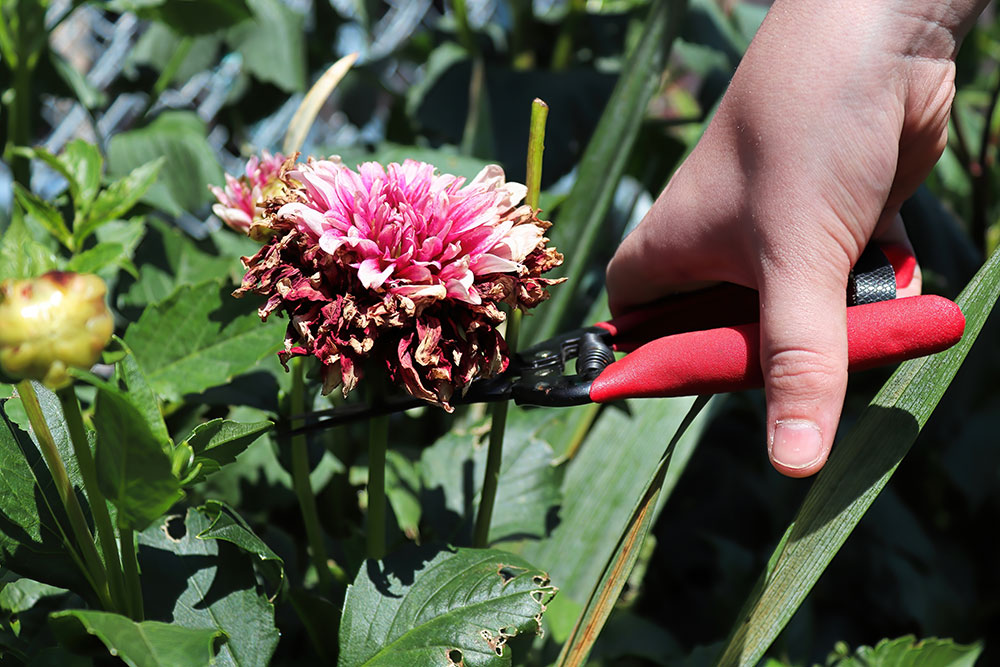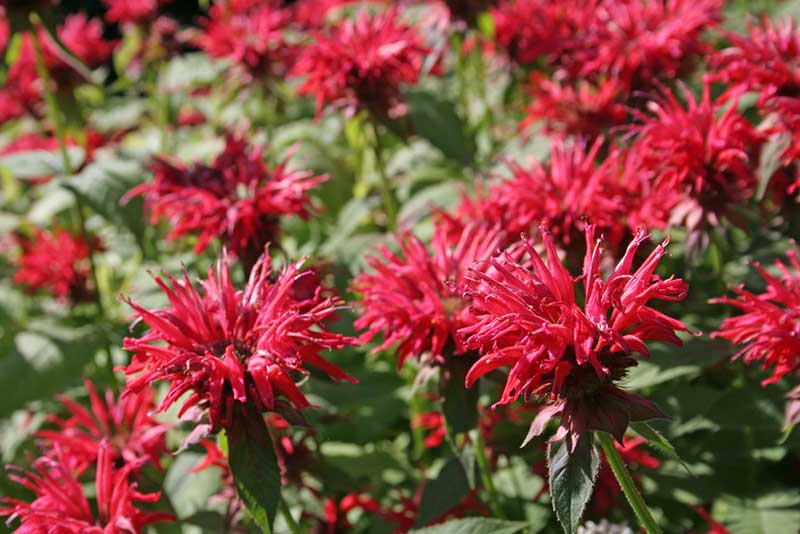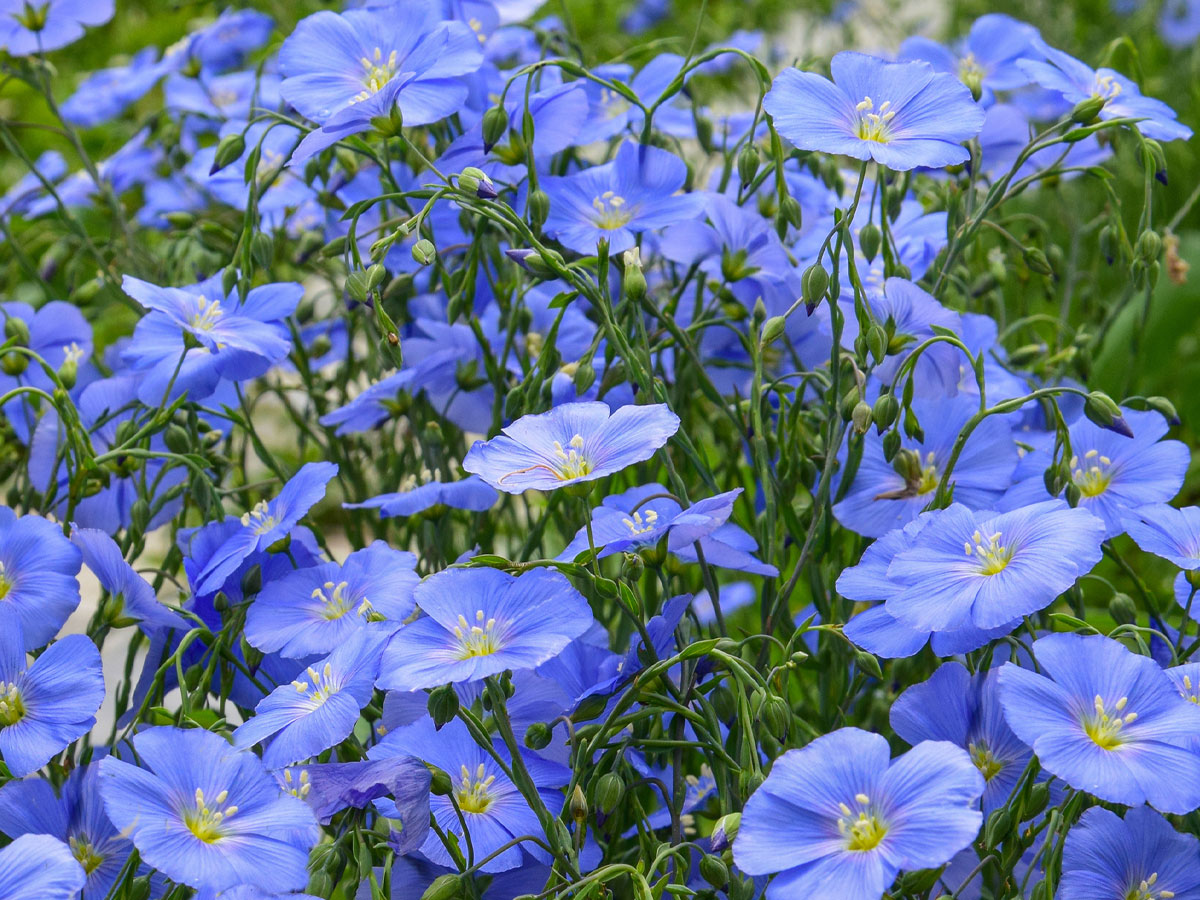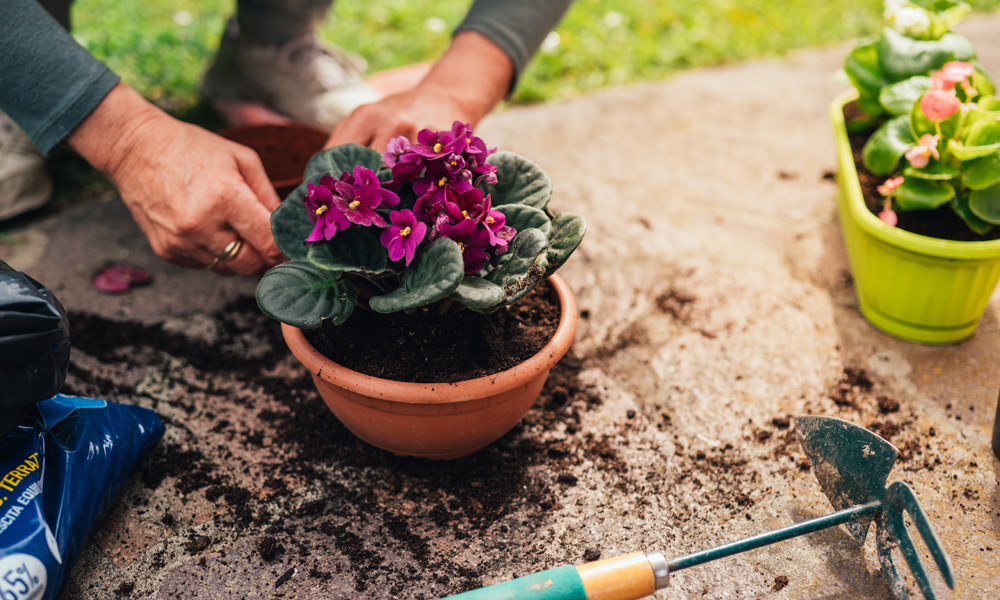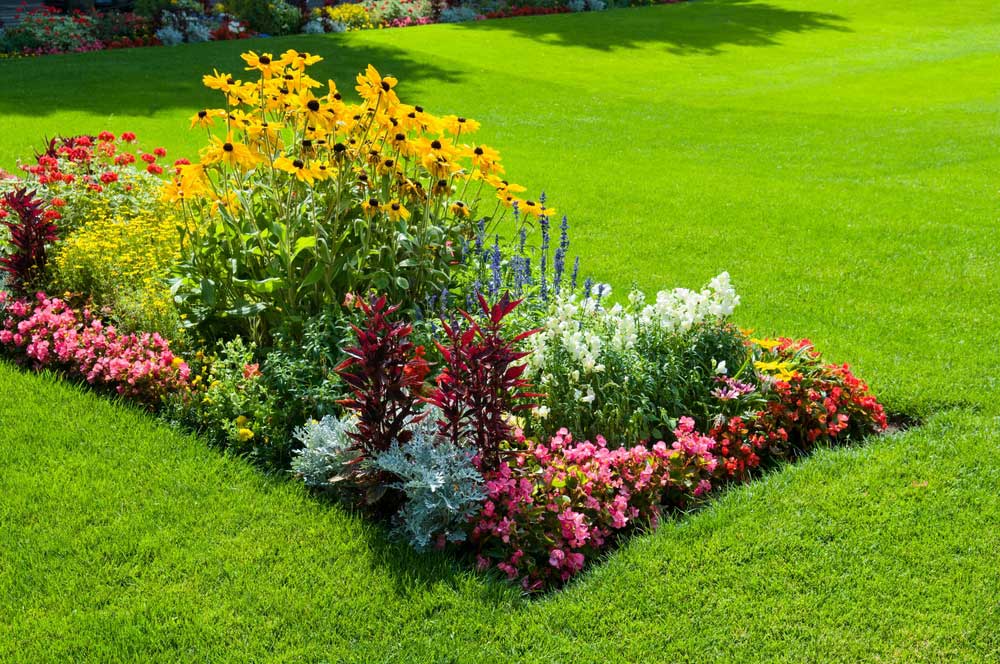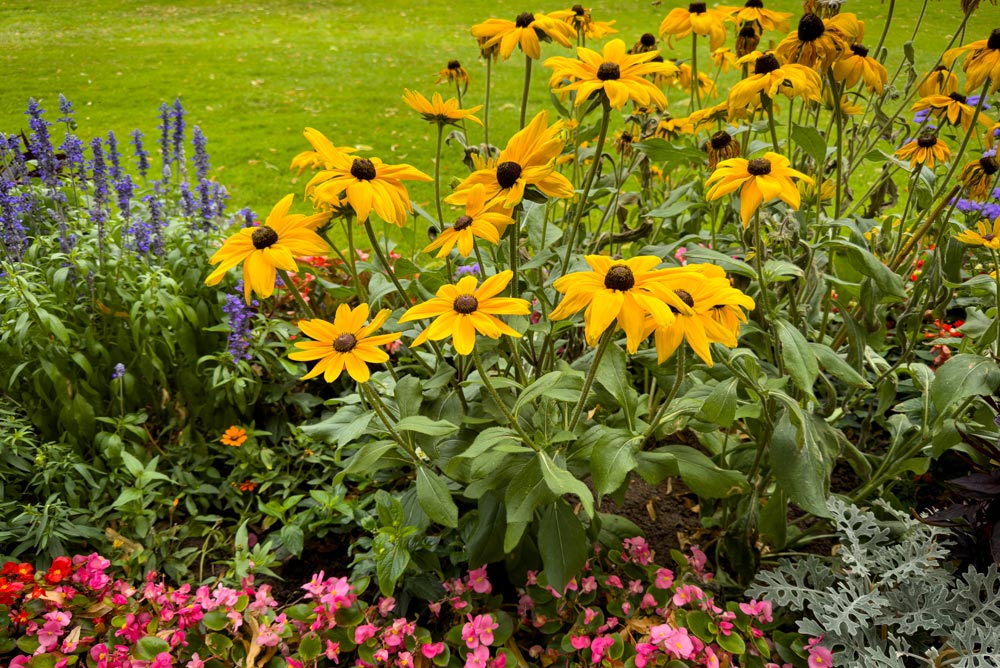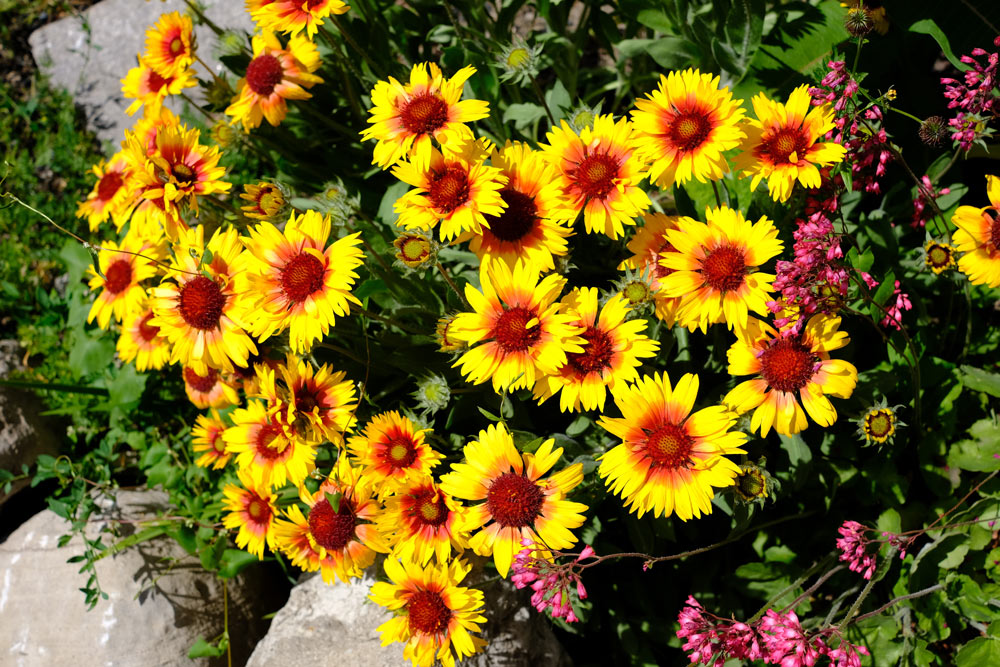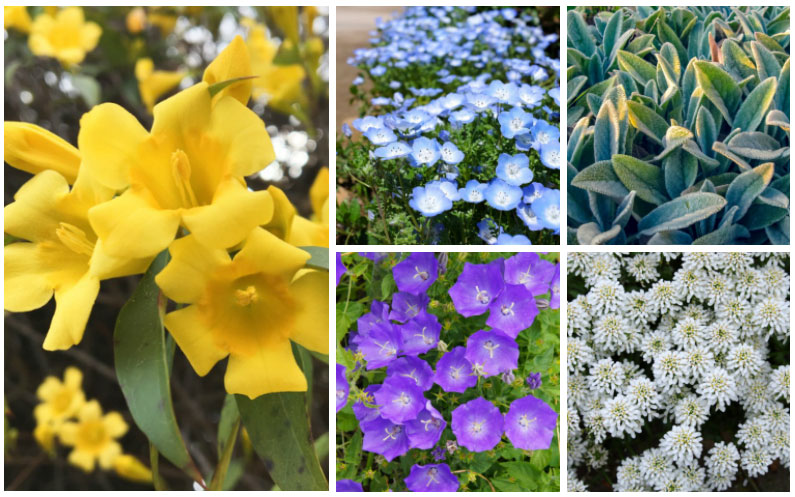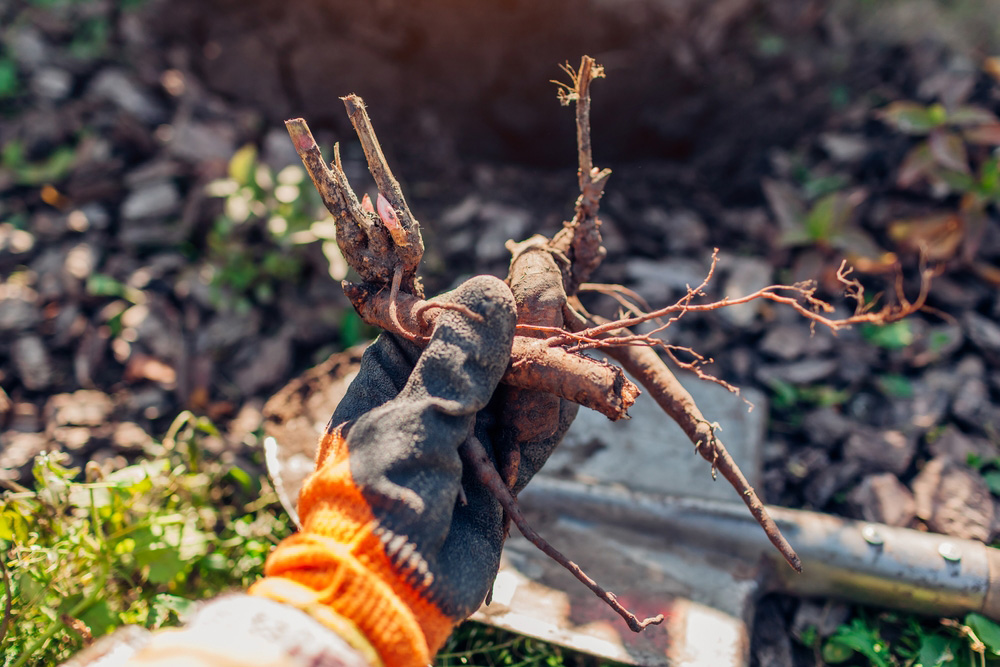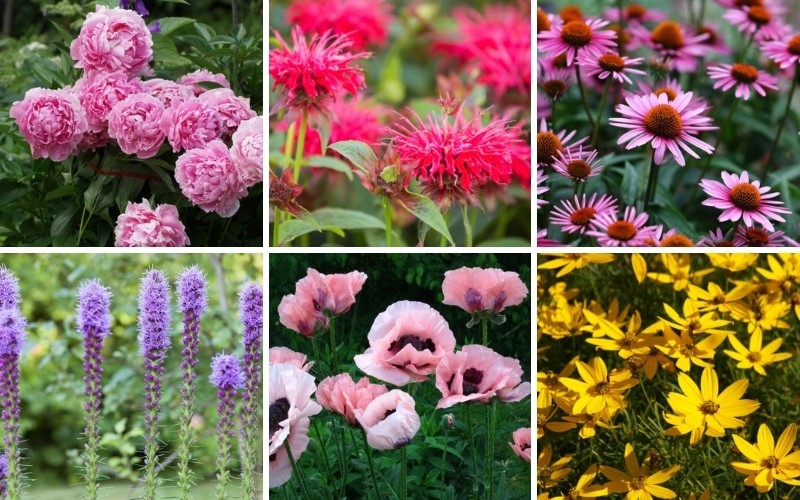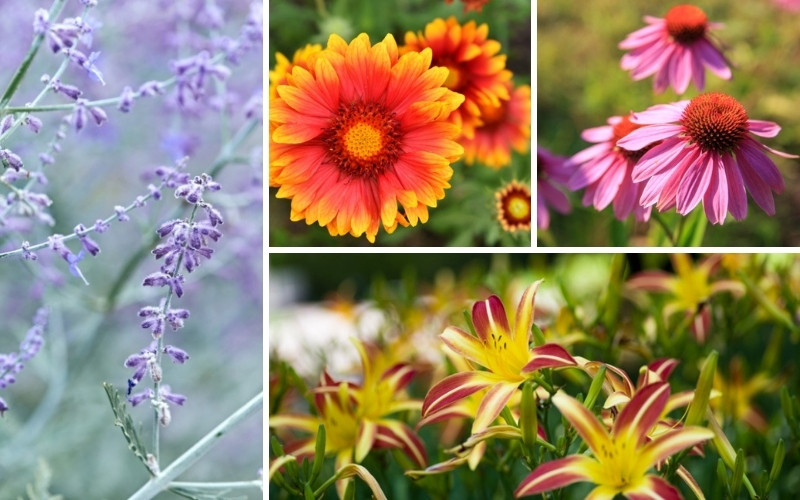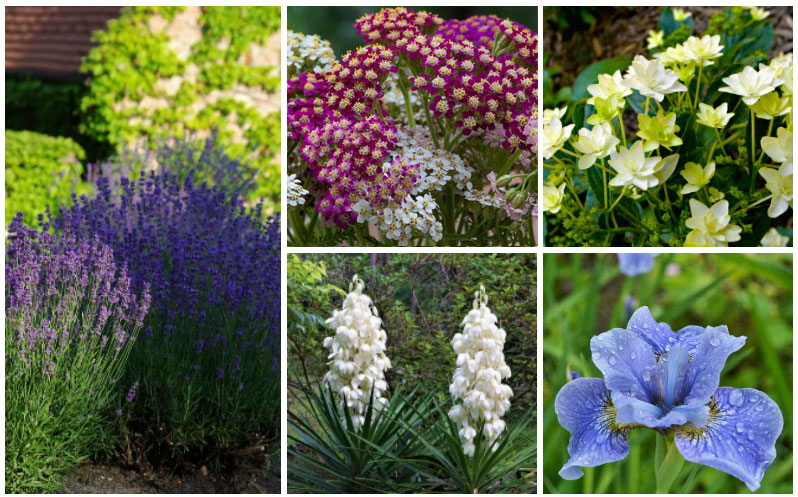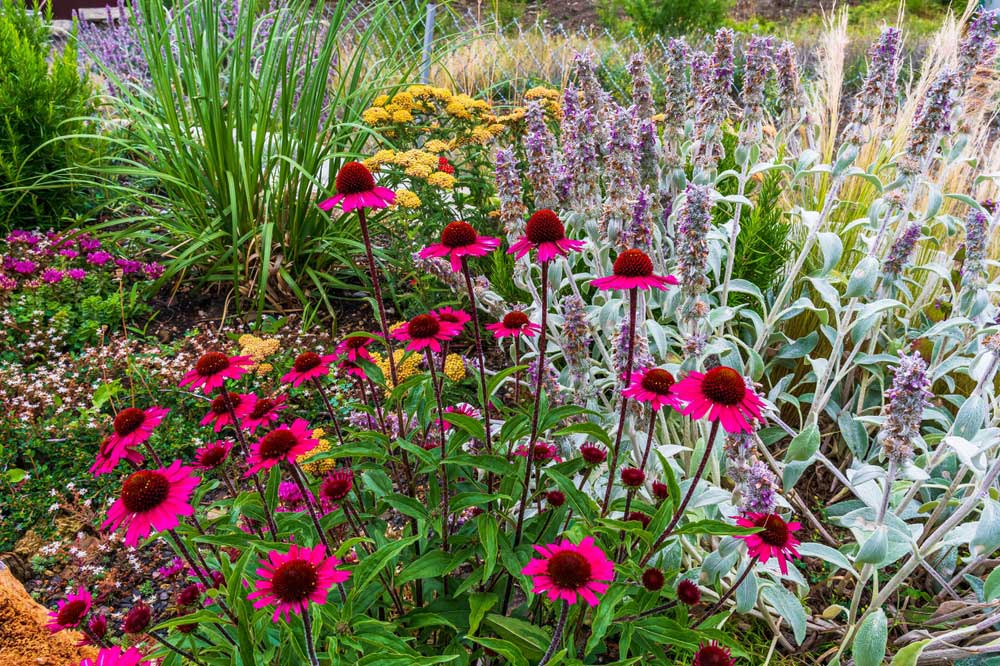
We all want gardens that keep on giving, don’t we? That magical combination of plants that provides waves of color from spring through fall without constant replanting.
Today, we’ll look at 15 perennials that bloom multiple times a year – these hardworking plants transform your garden into a continuous showcase with minimal effort.
Some perennials naturally flower in cycles, while others respond to deadheading by producing another flush of blooms rather than setting seed. This simple garden task can extend your flowering season by weeks or even months with certain varieties.
If you’re looking to design a garden with non-stop color, combine these reblooming perennials with different heights, textures, and bloom times.
Pair early-flowering varieties with later-starting ones, and include plants with interesting foliage for when flowers take a break.
Let’s dive into these garden workhorses that keep the show going all season long!
1. Daylily (Hemerocallis spp.)
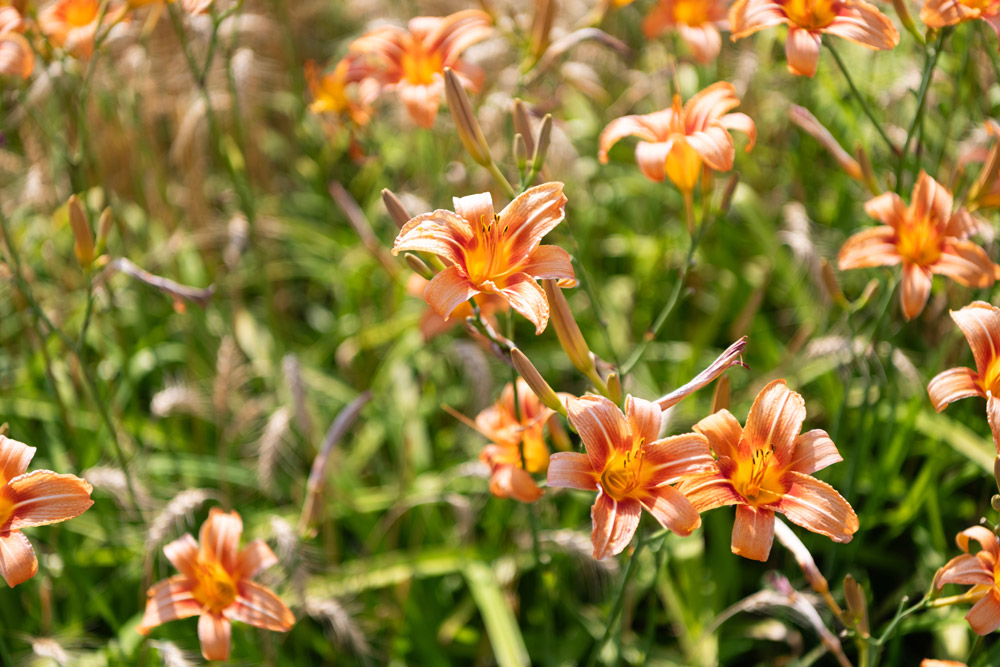
Daylilies are the ultimate low-maintenance perennial with impressive reblooming capabilities. While each individual flower lasts just a day (hence the name), these plants produce buds in succession for weeks. Reblooming varieties like ‘Stella d’Oro’ and ‘Stephanie Returns’ take performance to another level, offering multiple flowering cycles throughout the growing season.
With their strappy foliage and lily-like blooms in shades ranging from sunny yellow to deep burgundy, daylilies create a lush, textural presence in the garden. They thrive in USDA zones 3-9, making them adaptable to most growing regions. Plant them in full sun to light shade for best results, though they’ll tolerate a range of conditions.
You’ll want to place daylilies where you can enjoy their colorful display – along borders, in mixed perennial beds, or even in large containers. They pair beautifully with ornamental grasses and other summer bloomers like coneflowers. For best performance, plant in well-draining soil, water regularly until established, and divide every 3-4 years to maintain vigor.
2. Clematis (Clematis spp.)
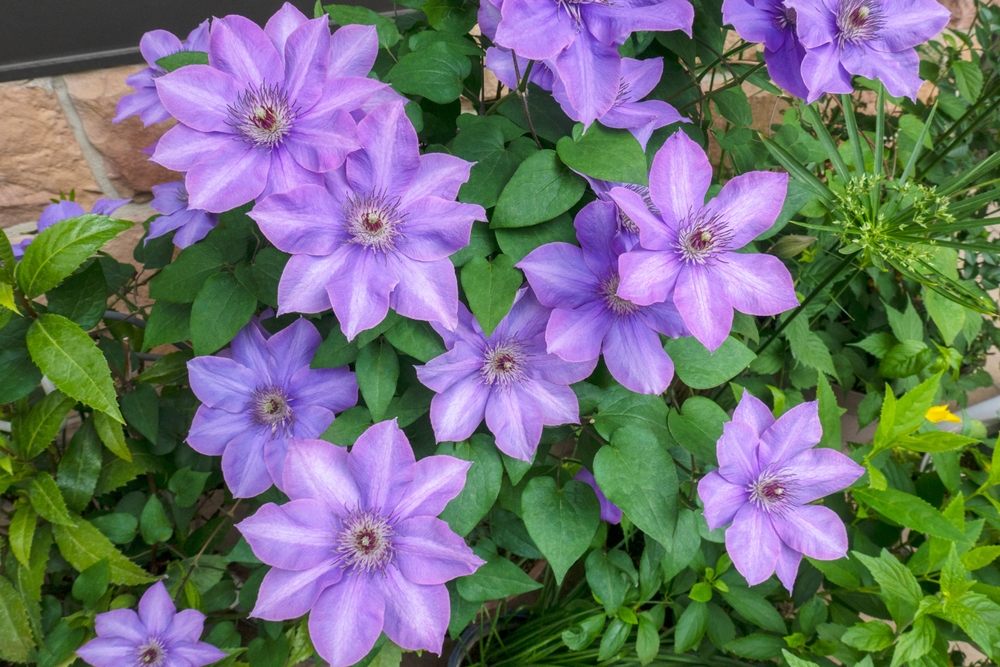
Clematis vines offer some of the most dramatic flowering displays in the garden, and Group 2 varieties like ‘Piilu’ and ‘Nelly Moser’ reliably bloom twice each season. These botanical acrobats produce their first flowers on last year’s wood in spring, followed by a second performance on new growth in summer.
With their star-shaped flowers in shades of purple, pink, blue, and white, clematis creates vertical interest and can transform fences, trellises, or arbors into flowering features. Most reblooming varieties thrive in USDA zones 4-9 and prefer “cool feet, warm heads” – meaning soil that stays cool while the vines receive plenty of sunlight.
Let’s look at planting these beauties correctly: position them where the roots stay shaded but the vines can climb into sunlight. Plant deeply (about 3 inches deeper than in the nursery pot), in rich, well-draining soil. Water thoroughly but infrequently to encourage deep root growth, and apply a balanced fertilizer in spring.
3. Black-Eyed Susan (Rudbeckia hirta)
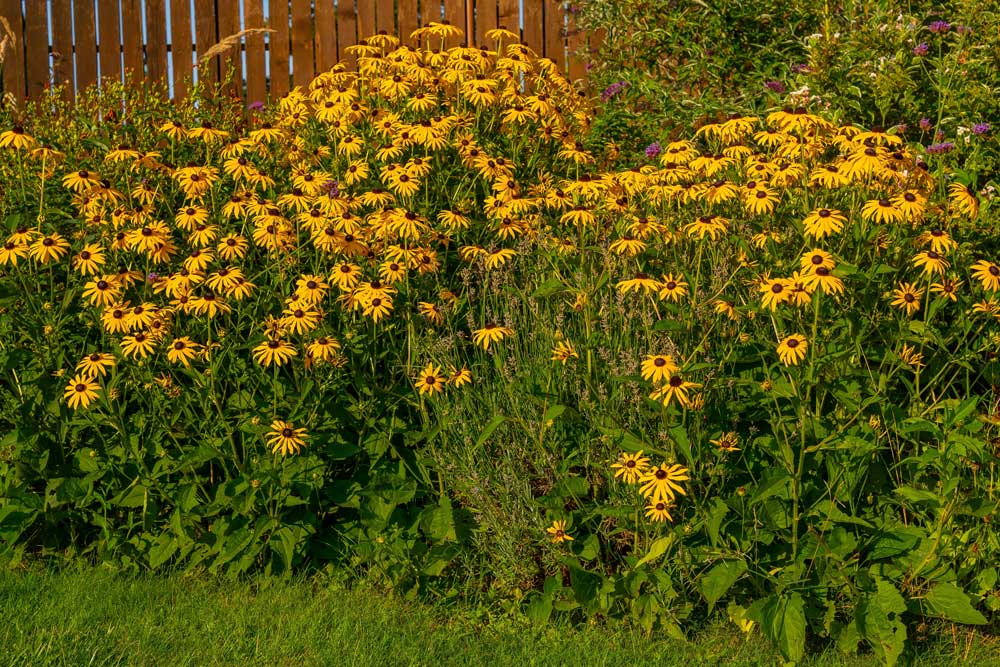
Black-Eyed Susans bring sunshine to the garden with their golden petals and distinctive dark centers. While often grown as short-lived perennials or biennials, these cheerful natives will reward your deadheading efforts with a second flush of blooms in late summer, extending their display well into fall.
These daisy-like flowers stand atop sturdy stems with rough, hairy leaves, creating a rustic, meadow-like feel in the garden. They’re adaptable to USDA zones 3-9 and perform best in full sun locations. Their drought tolerance once established makes them a forgiving choice for busy gardeners.
You can use Black-Eyed Susans in prairie-style plantings, cottage gardens, or mixed perennial borders. They’re perfect companions for ornamental grasses, coneflowers, and Russian sage. Plant in average, well-draining soil, water regularly until established, and then reduce frequency. Deadheading is the key to encouraging that valuable second bloom!
4. Bee Balm (Monarda spp.)
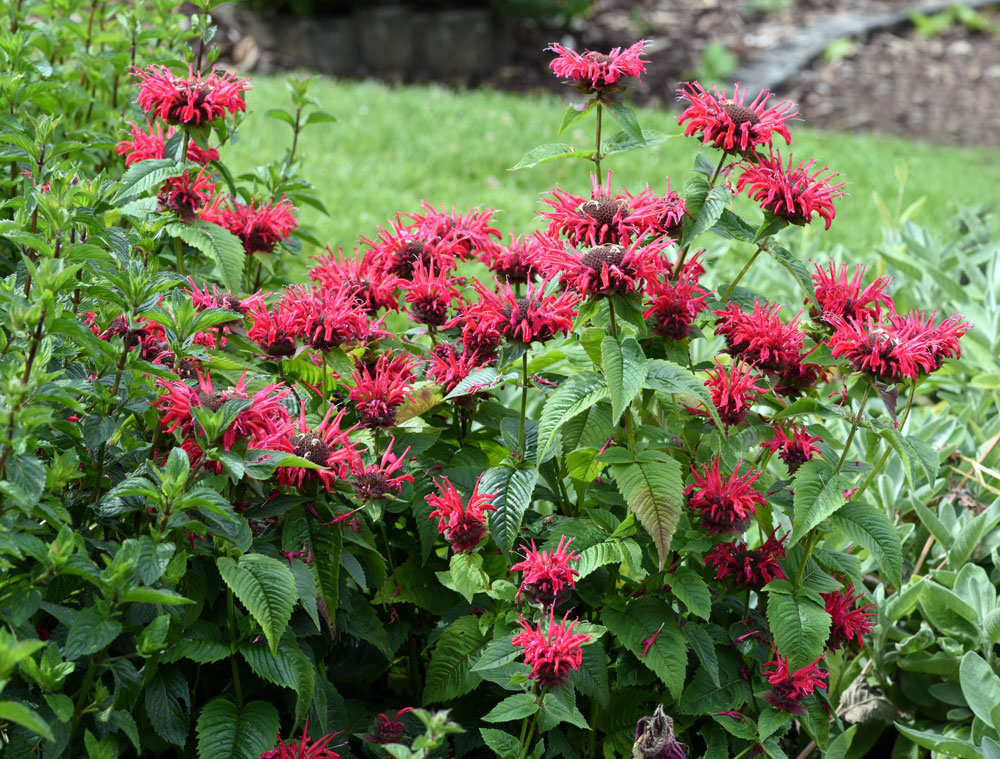
Bee Balm is a pollinator magnet that offers multiple blooms throughout the summer season. This native perennial produces vibrant whorls of tubular flowers that attract bees, butterflies, and hummingbirds in droves. With deadheading, varieties like ‘Jacob Cline’ and ‘Raspberry Wine’ will continue flowering from early summer well into fall.
With its square stems and lightly-toothed, aromatic leaves, Bee Balm creates both visual and sensory interest in the garden. The flowers resemble colorful fireworks in shades of red, pink, purple, and white. Most varieties thrive in USDA zones 4-9 and perform best in full sun to partial shade locations with good air circulation.
If you’re looking to create a pollinator paradise, place Bee Balm in a sunny border alongside other native plants like coneflowers and black-eyed Susans. Plant in rich, well-draining soil that stays consistently moist, and divide every 2-3 years to maintain vigor and prevent the center from dying out. As a bonus, this member of the mint family offers fragrant foliage that can be used in teas and culinary creations.
5. Hydrangea (Hydrangea spp.)
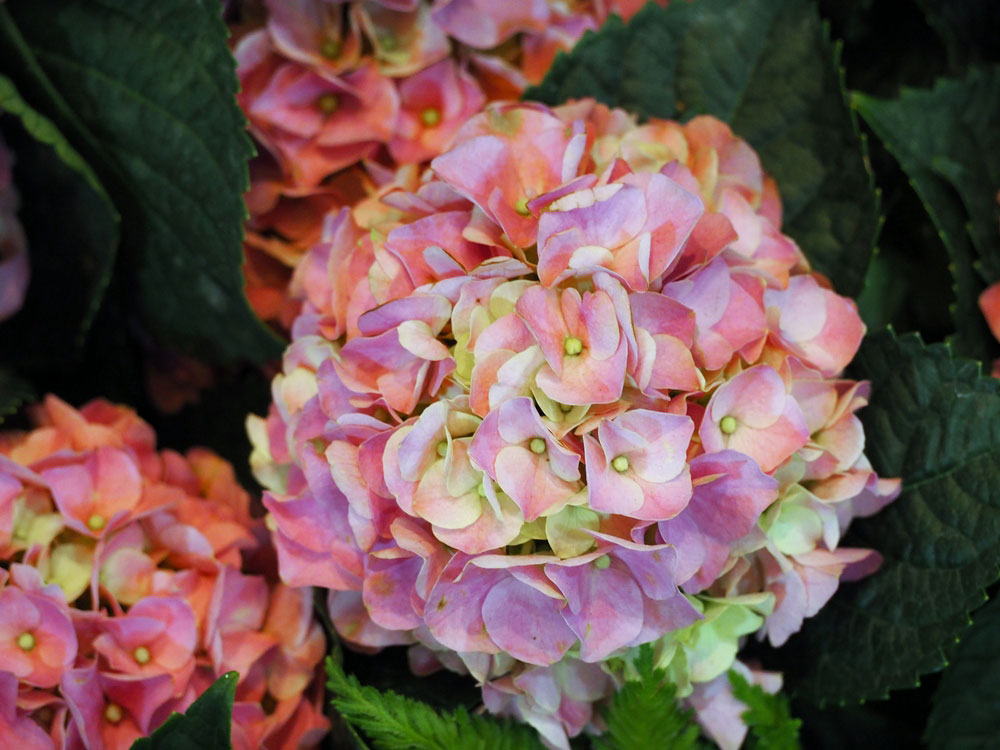
Modern reblooming hydrangeas have revolutionized gardens by flowering on both old and new wood. This means even if late frosts damage early buds, these resilient shrubs will still produce blooms throughout the season on new growth – a game-changer for gardeners in variable climates.
These showy shrubs feature large, rounded flower clusters in shades of blue, pink, purple, or white, depending on soil pH. With their broad, serrated leaves, hydrangeas create a lush foundation in the garden. Most reblooming varieties perform well in USDA zones 4-9 and prefer morning sun with afternoon shade.
You’ll want to plant hydrangeas where they can be showcase plants – as focal points, in mixed shrub borders, or even in large containers. Provide rich, well-draining soil with plenty of organic matter, consistent moisture, and protection from harsh afternoon sun. A layer of mulch helps maintain soil moisture and temperature.
6. Echinacea (Purple Coneflower)
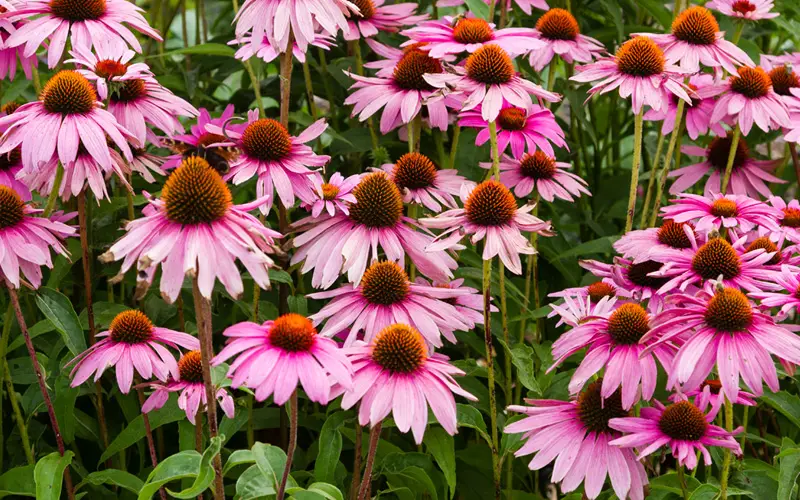
Coneflowers are workhorses in the perennial garden, blooming repeatedly without much fuss. Their daisy-like flowers with distinctive raised central cones appear in early summer, and with regular deadheading, they’ll continue producing new blooms until frost. Newer cultivars offer an expanded color palette beyond the traditional purple.
With their upright stems, narrow leaves, and architectural flower form, coneflowers add both color and structure to garden designs. They’re adaptable to USDA zones 3-9 and perform best in full sun, though they’ll tolerate light shade. Their deep root systems make them remarkably drought-tolerant once established.
Let’s look at how to use these native beauties: they shine in prairie-style plantings, mixed perennial borders, and cutting gardens. Plant in well-draining soil of average fertility – too rich a soil can lead to floppy growth. Water regularly until established, then reduce frequency to encourage strong root systems.
7. Garden Phlox (Phlox paniculata)

Garden phlox brings old-fashioned charm with its fragrant, dome-shaped flower clusters that attract a flurry of butterflies. These summer bloomers will continue flowering into fall with deadheading, providing months of color. The sweet perfume of phlox is an added bonus, especially noticeable in the evening garden.
These upright perennials feature lance-shaped leaves and rounded clusters of five-petaled flowers in shades of pink, purple, white, and bicolors. Most varieties thrive in USDA zones 4-8 and prefer full sun in northern regions, while appreciating afternoon shade in hotter climates.
You’ll want to give garden phlox good air circulation to prevent powdery mildew – space plants properly and consider planting in areas with morning sun to dry foliage quickly. Provide rich, well-draining soil with consistent moisture and a layer of compost each spring. Deadheading spent blooms promptly encourages those valuable repeat flowers.
8. Cranesbill Geranium (Geranium ‘Rozanne’)
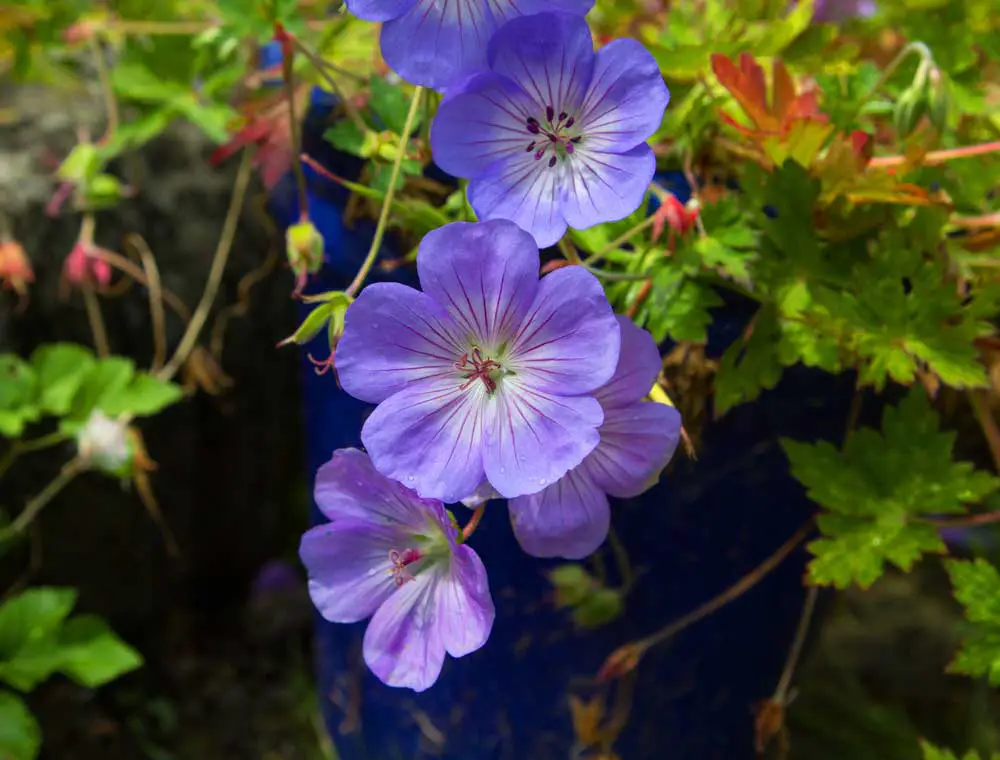
‘Rozanne’ geranium has earned its popularity by flowering continuously from early summer until frost – an exceptional performance that gardeners treasure. Its violet-blue flowers with white centers seem to float above the deeply cut, slightly marbled foliage, creating a soft, billowing effect in garden beds.
This low-growing perennial forms mounds of attractive foliage topped with saucer-shaped flowers. It performs well in USDA zones 5-8 and is adaptable to both full sun and partial shade, though flowering is most abundant with at least 6 hours of sunlight daily.
If you’re looking for a versatile plant, ‘Rozanne’ works beautifully as a long-blooming border plant, groundcover, or container specimen. Plant in well-draining soil amended with compost, provide regular water during dry spells, and consider trimming back by a third in midsummer if growth becomes leggy – this will refresh the plant and stimulate new blooms.
9. Bougainvillea (Bougainvillea spp.)

Bougainvillea dazzles with waves of vibrant color as its papery bracts surround tiny white flowers. While grown as a tender perennial in most of the US, it’s worth the effort for its remarkable reblooming ability. Pruning after the initial summer display encourages a second flush in fall, extending the season of tropical color.
With its thorny, woody stems and heart-shaped leaves, bougainvillea creates a dramatic vertical accent when trained on supports. It thrives in USDA zones 9-11 as a perennial, though gardeners in colder regions can enjoy it as a container specimen brought indoors for winter.
You’ll want to give bougainvillea full sun – at least 6 hours daily – for best flowering. Plant in well-draining soil, water deeply but infrequently, and fertilize with a high-phosphorus formula to encourage blooming. Slightly stressing the plant by allowing it to dry between waterings actually promotes better flowering.
10. Azalea (Encore Series)
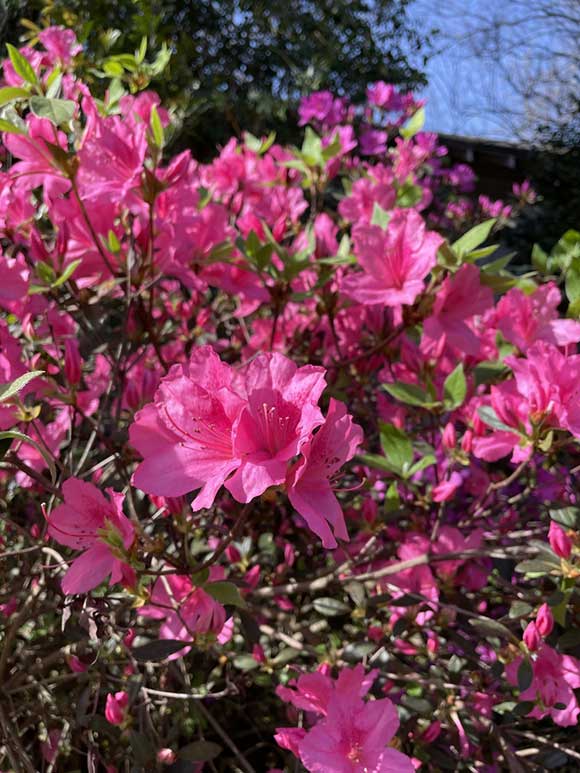
Encore azaleas have transformed what we expect from these traditional spring shrubs by reliably blooming in spring, summer, and fall. Varieties like Autumn Belle or Perfecto Mundo offer months of color rather than the brief spring display of conventional azaleas – truly a revolution for shade gardens.
These compact, evergreen shrubs feature glossy foliage and funnel-shaped flowers in shades of pink, purple, red, and white. Most Encore varieties perform well in USDA zones 6-10 and prefer filtered sunlight or morning sun with afternoon shade.
Consider using these multi-season bloomers in foundation plantings, woodland gardens, or as specimens in partly shaded locations. Plant in acidic, well-draining soil rich in organic matter, water consistently but not excessively, and apply an acid-loving plant fertilizer in early spring.
11. Russian Sage (Perovskia atriplicifolia)
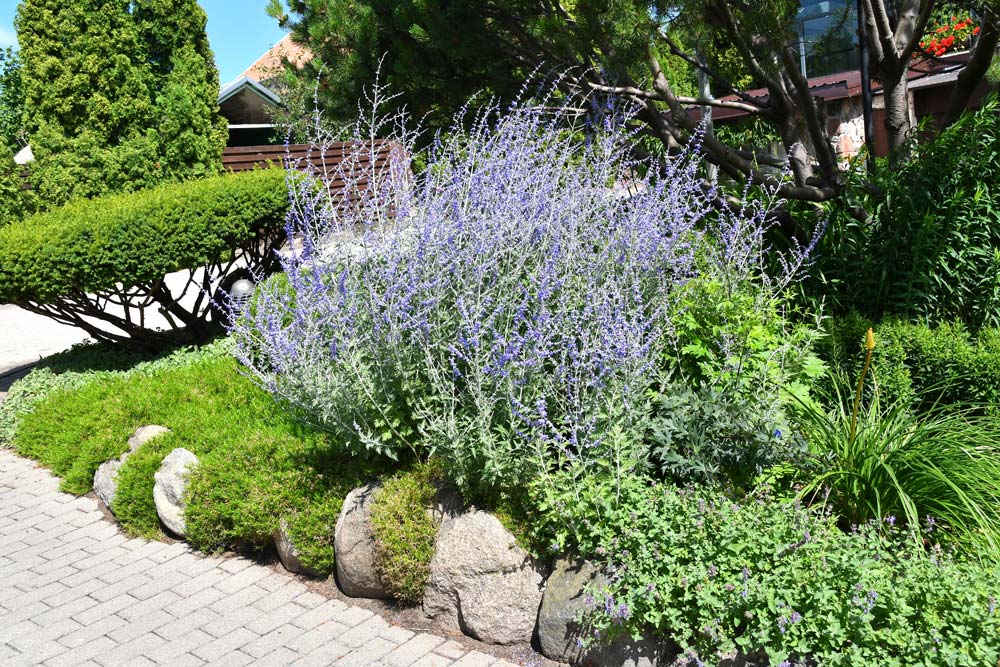
Russian sage creates clouds of lavender-blue flowers from July through October, adding a soft, ethereal quality to gardens. Its extended bloom period and drought tolerance make it an exceptional value in hot, sunny locations where other perennials might struggle during late summer.
With its silvery-gray aromatic foliage and airy spires of tiny flowers, Russian sage brings both color and textural interest to the garden. It thrives in USDA zones 4-9 and requires full sun and excellent drainage to perform its best.
You’ll want to position Russian sage where its wispy nature complements more structured plants – try pairing it with coneflowers, black-eyed Susans, or ornamental grasses for a combination that shines in late summer. Plant in lean, well-draining soil, water until established, then reduce frequency as this plant is remarkably drought-tolerant once its roots are developed.
12. Yarrow (Achillea millefolium)
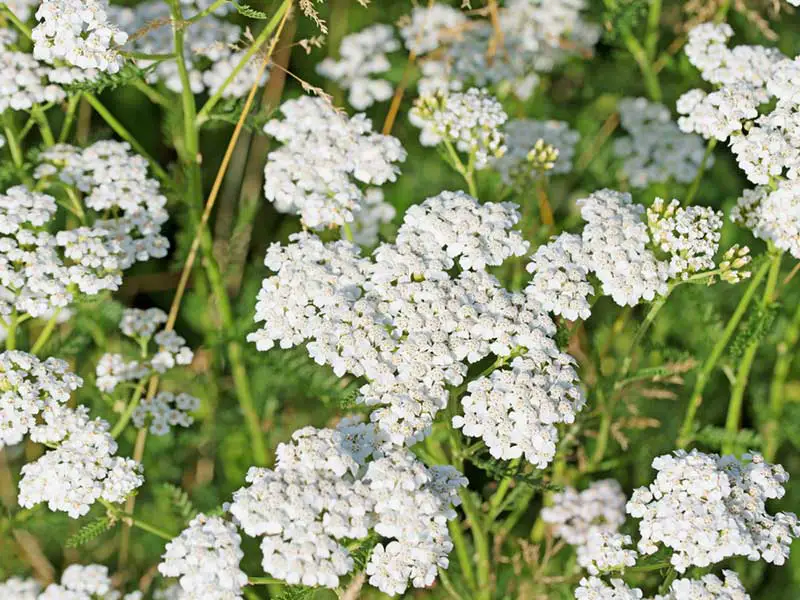
Yarrow earns its keep in the garden with clusters of long-lasting flowers that bloom throughout summer when regularly deadheaded. This ancient herb combines ornamental and medicinal value, with modern cultivars offering improved colors ranging from soft pastels to vibrant reds and yellows.
With its ferny, aromatic foliage and flat-topped flower clusters atop sturdy stems, yarrow adds both texture and color to garden designs. It performs well in USDA zones 3-9 and prefers full sun, though it will tolerate light shade with reduced flowering.
If you’re looking for a low-maintenance perennial, yarrow thrives in average to poor soil and actually performs better without rich amendments. Plant in well-draining locations, water occasionally until established, then enjoy its drought tolerance. Regular deadheading will keep those colorful flower clusters coming all season.
13. Spiked Speedwell (Veronica spicata)
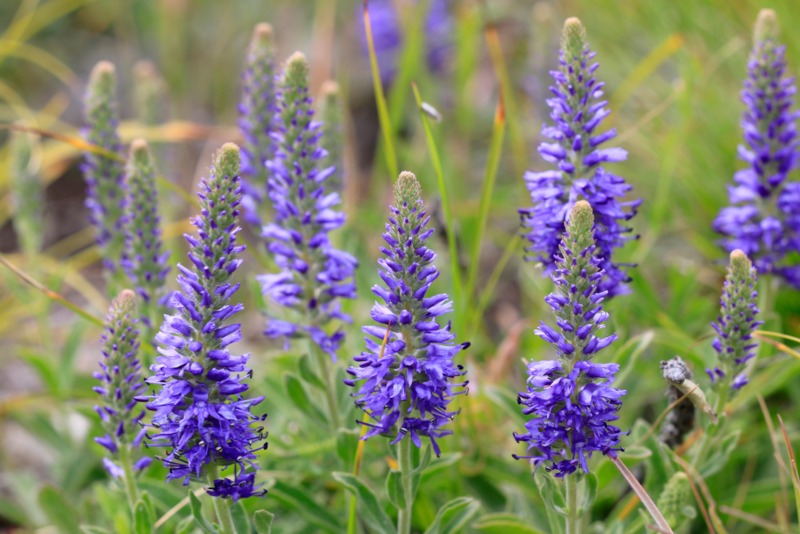
Spiked speedwell produces elegant flower spires that add vertical interest to the garden from June through August. Regular deadheading or shearing after initial flowering promotes a second and sometimes third flush of blooms, extending its display well into fall.
These upright perennials feature lance-shaped leaves and dense spikes of tiny flowers in shades of blue, purple, pink, or white. Most varieties thrive in USDA zones 3-8 and perform best in full sun, though they’ll tolerate light afternoon shade in hotter regions.
You can use speedwell in mixed perennial borders, cottage gardens, or cut flower arrangements. Plant in rich, well-draining soil, provide consistent moisture, and consider a half-strength fertilizer application after the first bloom cycle to encourage vigorous reblooming.
14. Red Hot Poker (Kniphofia uvaria)

Red Hot Poker creates dramatic vertical accents with its torch-like flower spikes that transition from fiery red to yellow. Modern hybrids like ‘Mango Popsicle’ rebloom multiple times between late spring and midsummer, providing extended color from these architectural plants.
With their grassy, arching foliage and distinctive tubular flowers on tall stems, Red Hot Pokers add exotic flair to garden designs. They perform well in USDA zones 5-9 and require full sun for best flowering.
Let’s look at how to use these eye-catching plants: they make bold statements in mixed borders, gravel gardens, or as focal points. Plant in well-draining soil, water moderately, and remove spent flower stalks promptly to encourage reblooming. In colder regions, protect the crown with winter mulch.
15. Wisteria (Wisteria spp.)
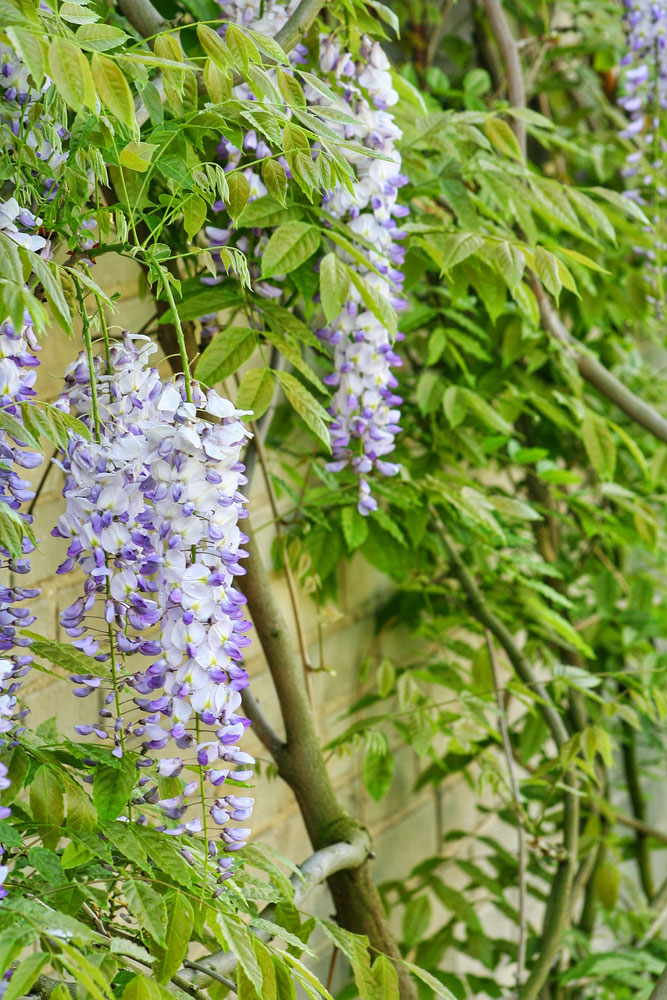
Reblooming wisteria varieties like ‘Amethyst Falls’ and ‘Blue Moon’ have transformed how we use these traditionally vigorous vines. Unlike conventional wisteria that flowers only in spring, these improved cultivars produce their dramatic hanging flower clusters two to three times per season.
With their twining stems, compound leaves, and pendulous racemes of pea-like flowers, wisterias create romantic, cottage-garden character. Most reblooming varieties grow well in USDA zones 5-9 and require full sun to flower abundantly.
You’ll want to provide strong support for these woody climbers – arbors, pergolas, or sturdy trellises work well. Plant in well-draining, moderately fertile soil, water regularly until established, then reduce frequency. Unlike traditional wisteria, these reblooming types benefit from light pruning after each flowering cycle to stimulate the next round of blooms.

